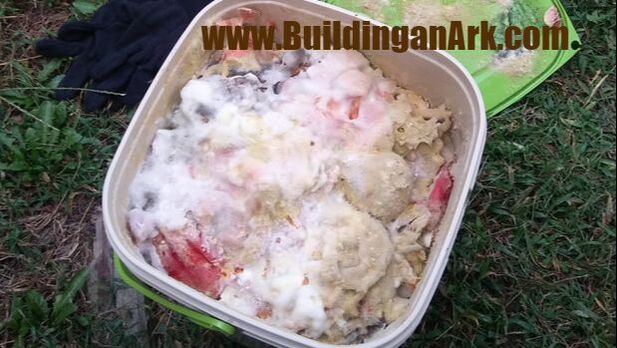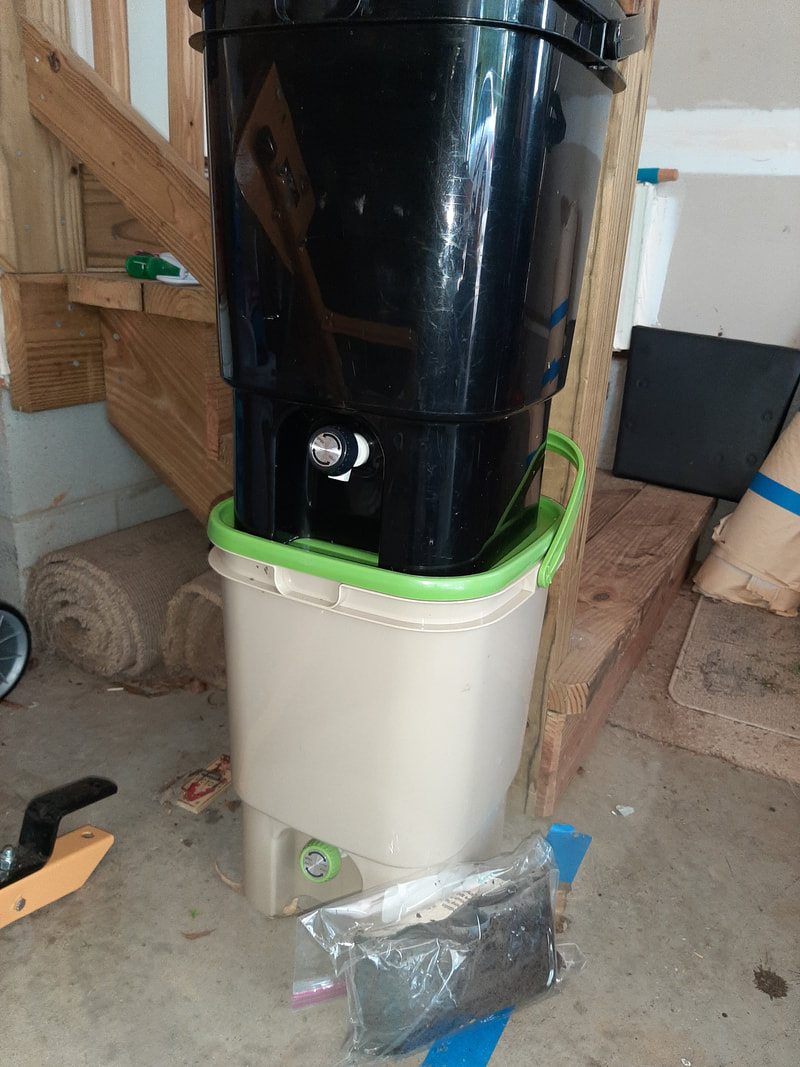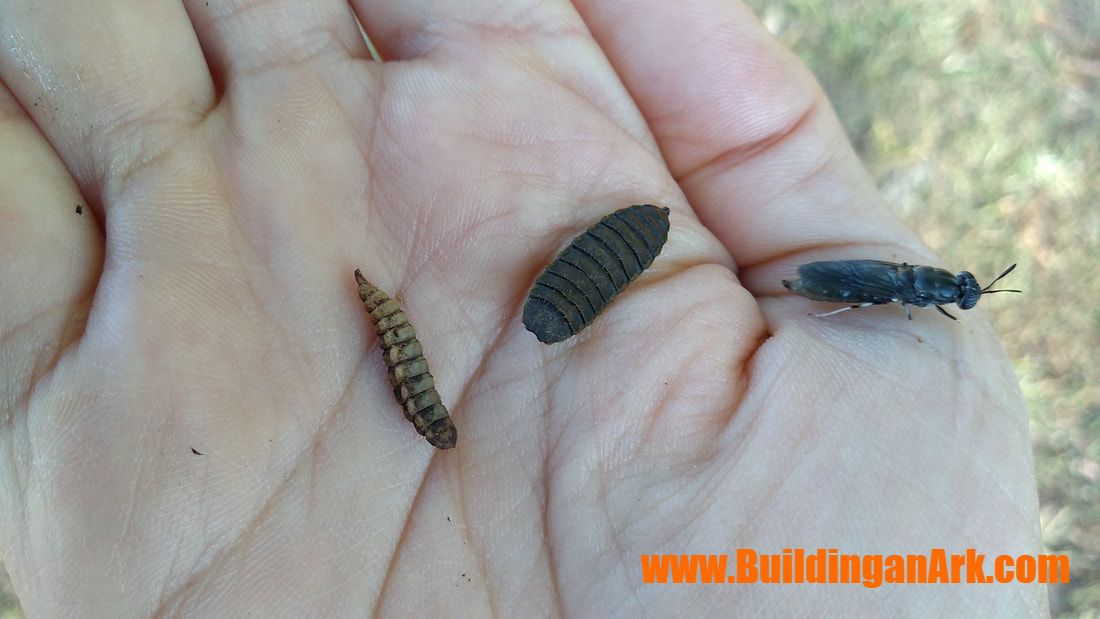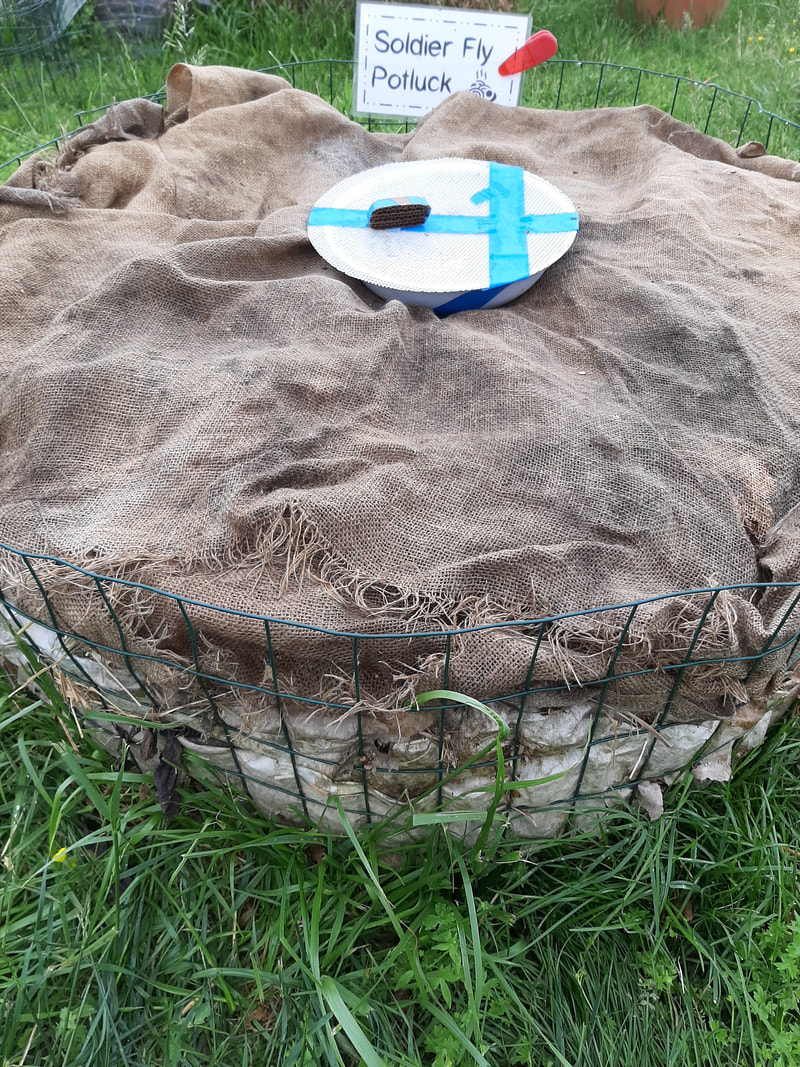Inga's Food Waste Management System
At our house, we divert all food waste from the landfill and process all of it on site. We eat plenty of fried food, spicy food, processed food, along with healthy stuff of course. But, typically the rules of composting forbid putting these types of foods in compost or worm bins. By using Bokashi waste fermenting and composting with black soldier fly larva, we are able to efficiently and safely return ALL of our food waste back to the earth.
In Bokashi, you ferment your food waste with anaerobic microbes in a sealed container -- usually a 5 gallon bucket with a tight seal (gamma seal or specially designed bokashi bin). It allows you to store your waste till you are ready to deal with it. Typically, people just bury their bokashi scraps after a 2-week fermentation period. Where I live, the ground is hard pan clay, and I have lived in places with limited space, so finding multiple places to bury scraps was not practical. I do Bokashi in the winter months and store my food scraps all winter till spring. No smell, no bugs.
Enter Black Soldier Flies - my favorite creature on earth. These clean insects are seasonal, warm weather creatures. You typically find them in your compost bin anyways. But, each spring, I seed a freshly made wire compost bin with 10 to 20K larva. The larva have a voracious appetite. They can eat all kinds of food (yes fried, spicy, sugar, processed, anything, including bokashi scraps). If you allow them to dominate a bin, other nasty flies stay away. When they are ready to pupate, they crawl out of their food source (bin) and find a dry place to turn into an adult fly. The adults live for only a week to mate and die. You never see them. Because soldier flies convert 95% of what they eat into themselves and leave when they are ready to pupate, then your bin level never gets overwhelmed. I do not clean out my bin till the end of the season (fall). I literally dump gallons and gallons of food scraps all summer long, including those winter food scraps from Bokashi bins. When, fall settles in, I switch back to Bokashi to store my scraps till spring.
I have done this system at a townhouse, suburban backyard, and our new country property (2 acres).
In Bokashi, you ferment your food waste with anaerobic microbes in a sealed container -- usually a 5 gallon bucket with a tight seal (gamma seal or specially designed bokashi bin). It allows you to store your waste till you are ready to deal with it. Typically, people just bury their bokashi scraps after a 2-week fermentation period. Where I live, the ground is hard pan clay, and I have lived in places with limited space, so finding multiple places to bury scraps was not practical. I do Bokashi in the winter months and store my food scraps all winter till spring. No smell, no bugs.
Enter Black Soldier Flies - my favorite creature on earth. These clean insects are seasonal, warm weather creatures. You typically find them in your compost bin anyways. But, each spring, I seed a freshly made wire compost bin with 10 to 20K larva. The larva have a voracious appetite. They can eat all kinds of food (yes fried, spicy, sugar, processed, anything, including bokashi scraps). If you allow them to dominate a bin, other nasty flies stay away. When they are ready to pupate, they crawl out of their food source (bin) and find a dry place to turn into an adult fly. The adults live for only a week to mate and die. You never see them. Because soldier flies convert 95% of what they eat into themselves and leave when they are ready to pupate, then your bin level never gets overwhelmed. I do not clean out my bin till the end of the season (fall). I literally dump gallons and gallons of food scraps all summer long, including those winter food scraps from Bokashi bins. When, fall settles in, I switch back to Bokashi to store my scraps till spring.
I have done this system at a townhouse, suburban backyard, and our new country property (2 acres).



